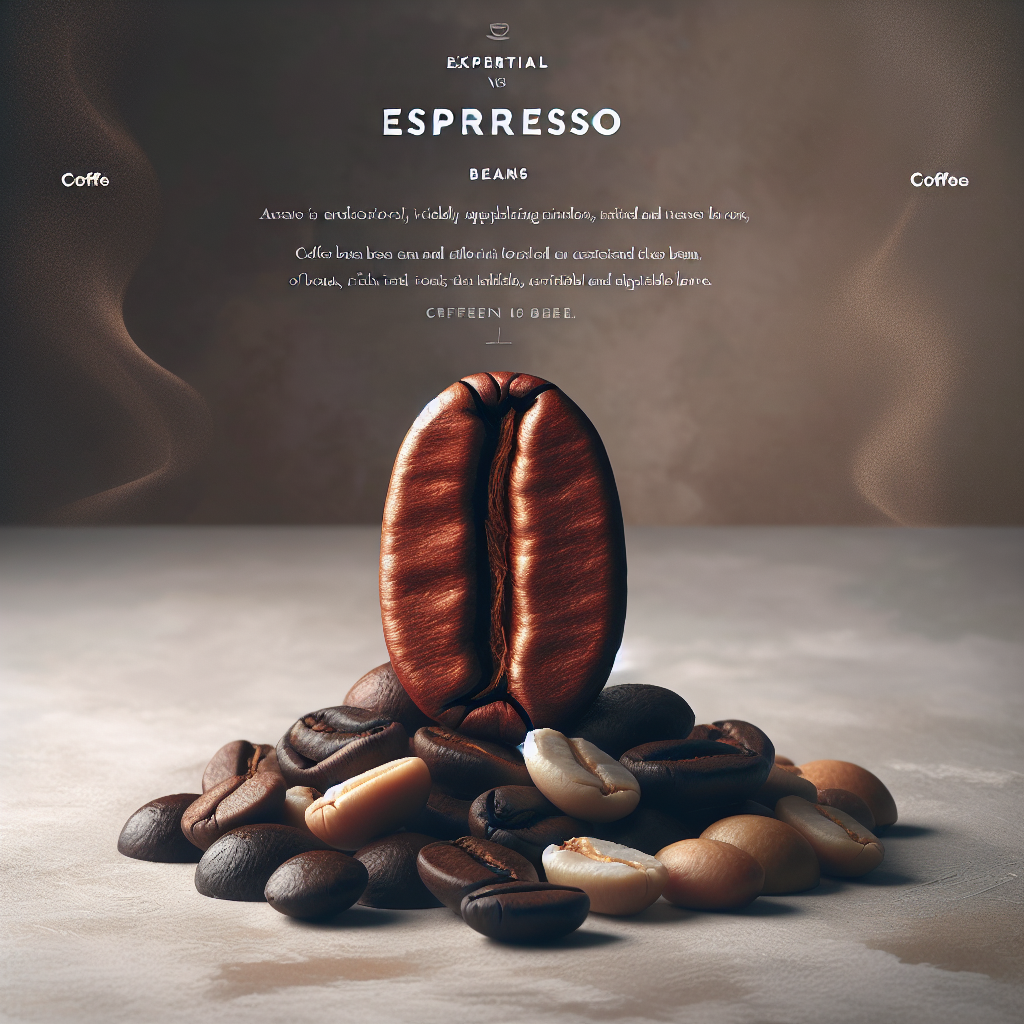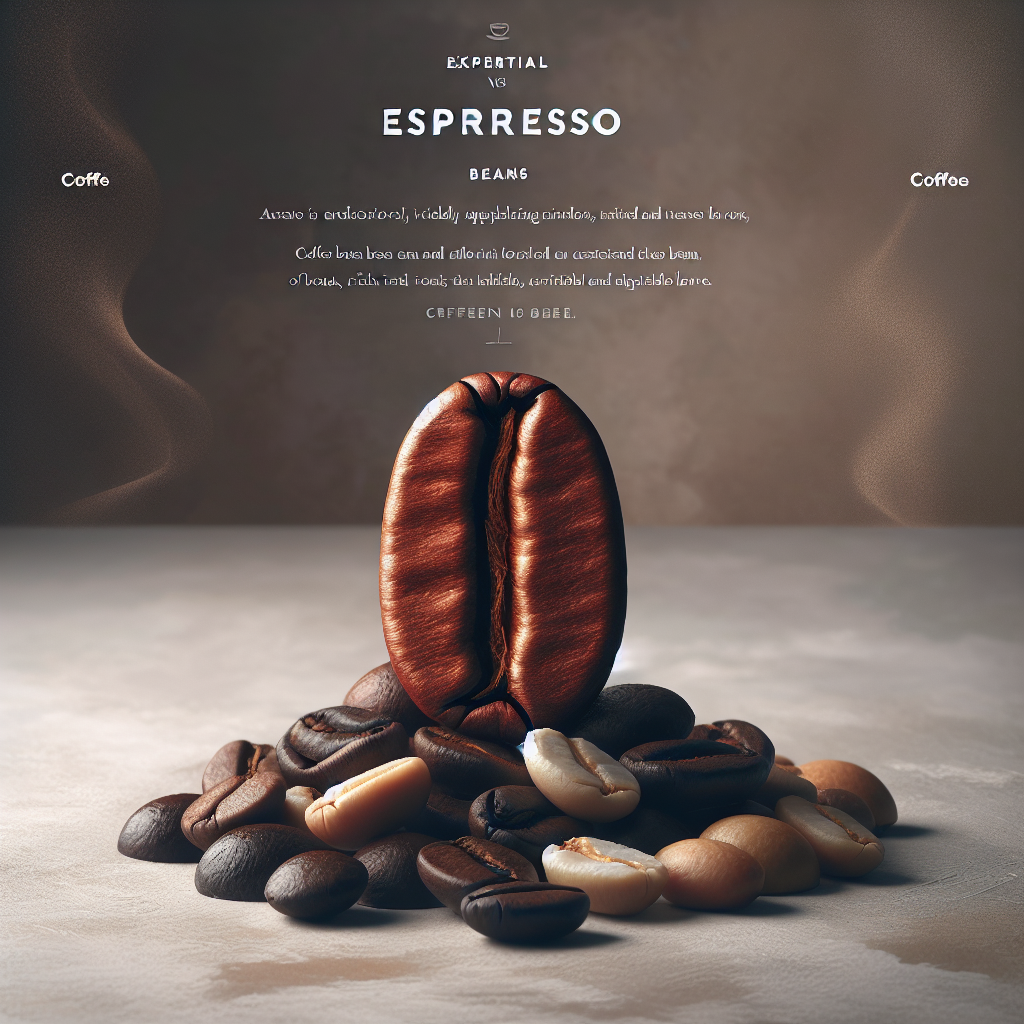Are you a coffee enthusiast who’s always wondered about the distinction between espresso beans and coffee beans? Look no further, because in this article, we’re here to demystify the age-old question of “Espresso Beans vs. Coffee Beans: What’s the Difference?” Whether you enjoy a rich, velvety shot of espresso or prefer the familiar aroma of a freshly brewed cup of coffee, understanding the nuances between these two types of beans will help elevate your coffee experience. So grab your favorite mug and get ready to embark on a flavorful journey of discovery.

Roasting Process
Espresso Beans
Espresso beans undergo a specific roasting process that differs from regular coffee beans. The roasting process for espresso beans is typically darker and longer, resulting in a deep and intense flavor profile. The extended roasting time also helps to develop the oils within the beans, giving them a shiny appearance. This roasting method enhances the distinct characteristics of espresso beans, making them ideal for creating rich and bold espresso shots.
Coffee Beans
On the other hand, regular coffee beans are roasted using a slightly lighter roast profile. This allows for a wider range of flavors to emerge, as the lighter roasting process preserves the delicate nuances of the beans. The flavors of regular coffee beans can vary greatly depending on the origin of the beans, the roast level, and the brewing method. Coffee beans are known for their versatility, as they can be used to create various types of coffee beverages, including pour-over, French press, or drip coffee.
Bean Size
Espresso Beans
Espresso beans are often smaller in size compared to regular coffee beans. Their smaller size ensures a more even extraction during the brewing process, resulting in a bolder and more concentrated flavor. The small size also allows for a higher surface area-to-volume ratio, enabling the water to easily extract the desired oils and compounds from the beans. These characteristics make espresso beans perfect for brewing espresso shots, which require a quicker extraction time and a higher degree of intensity.
Coffee Beans
On the contrary, regular coffee beans tend to be larger in size compared to espresso beans. The larger size allows for a slower and more gradual extraction, creating a coffee beverage with a milder and less concentrated flavor. The larger surface area-to-volume ratio of regular coffee beans also allows for more subtle flavors and aromas to develop. These beans are well-suited for longer brewing methods like drip coffee, allowing the flavors to slowly infuse into the water over a longer period, producing a more balanced taste.
Flavor Profile
Espresso Beans
The flavor profile of espresso beans is often characterized by its intense, bold, and robust nature. The longer and darker roasting process brings out flavors such as dark chocolate, caramel, and even notes of smokiness. Espresso shots made from these beans are typically full-bodied, with a rich crema on top. The concentrated flavors of espresso beans make them perfect for creating espresso-based beverages, such as cappuccinos and lattes, where the robust flavors can still shine through the addition of milk.
Coffee Beans
Regular coffee beans offer a wide range of flavor profiles, depending on factors such as the origin of the beans, the roast level, and the brewing method. Lighter roasts tend to have brighter and fruitier flavors, while darker roasts may exhibit notes of chocolate, nuts, or spices. The flavor profile of regular coffee beans provides a more diverse and customizable experience, appealing to those who enjoy exploring different tastes and aromas in their coffee.
Caffeine Content
Espresso Beans
Contrary to popular belief, espresso beans do not contain higher levels of caffeine compared to regular coffee beans. The brewing method and serving size of espresso shots may give the illusion of a higher caffeine content due to their concentrated nature. However, in terms of caffeine per gram, espresso beans and regular coffee beans generally have similar levels. The caffeine content ultimately depends on the type and quality of the beans used, as well as the brewing ratio and serving size.
Coffee Beans
Similar to espresso beans, regular coffee beans vary in their caffeine content depending on factors such as the type of beans and brewing method. On average, a cup of regular brewed coffee may contain slightly more caffeine than a single shot of espresso. However, it is important to note that the serving sizes differ significantly, with espresso shots typically being around 1-2 ounces, while a cup of coffee may range from 8 to 12 ounces. Ultimately, the caffeine content in coffee beans can be adjusted to personal preference by varying the brewing ratio and serving size.
Brewing Method
Espresso Beans
Espresso beans are specifically roasted and ground to be used in espresso machines, which apply pressure to force water through a compacted bed of finely ground coffee. The high-pressure extraction method results in a concentrated and flavorful shot of espresso. The brewing time for espresso shots is relatively short, usually around 25-30 seconds, allowing for a quick extraction of the desired flavors and aromas. Espresso machines provide a precise and consistent brewing process, ensuring a reliable and enjoyable espresso experience.
Coffee Beans
Regular coffee beans can be brewed using various methods, such as pour-over, French press, or drip coffee machines. Each brewing method extracts flavors from the coffee beans differently, resulting in a range of taste profiles. Pour-over methods offer a lighter and more delicate taste, while French press brewing produces a fuller-bodied and robust flavor. Drip coffee machines provide convenience and a consistent brewing process, extracting a well-balanced cup of coffee. The choice of brewing method ultimately depends on personal preference and the desired flavor profile.
Grinding
Espresso Beans
Espresso beans are ground to a fine consistency, resembling powdered sugar or sand. The fine grind size allows for a higher extraction rate and a shorter brewing time. The even distribution of the fine grounds ensures a consistent extraction, resulting in a balanced and full-bodied espresso shot. It is crucial to use a high-quality burr grinder to achieve a consistent grind size, as any inconsistency can lead to uneven extraction and an imbalanced flavor profile.
Coffee Beans
Regular coffee beans can be ground to various consistencies depending on the brewing method used. For pour-over or drip coffee, a medium grind size is typically recommended. French press brewing calls for a coarser grind to prevent over-extraction. The grind size plays a vital role in determining the overall flavor and extraction of the coffee. Using a burr grinder allows for precise control over the grind size, ensuring a more consistent brewing process and a better tasting cup of coffee.
Crema
Espresso Beans
One distinguishing feature of espresso shots made from espresso beans is the presence of crema. Crema refers to the rich, golden-brown foam that forms on top of a freshly brewed espresso shot. The crema is created during the high-pressure extraction process, as the water interacts with the oils and soluble compounds in the finely ground coffee. It adds texture, aroma, and complexity to the espresso shot, serving as a visual and sensory representation of a well-made espresso.
Brewing Time
Espresso Beans
Espresso shots made from espresso beans are designed to have a relatively short brewing time. The high-pressure extraction process typically takes around 25-30 seconds. This quick brewing time allows for the extraction of the desired flavors and aromas without over-extracting and extracting bitter compounds. The short brewing time ensures a balanced and flavorful shot of espresso, highlighting the intensity and richness of the espresso beans.
Origins
Espresso Beans
Espresso beans can originate from various regions around the world, each imparting its unique characteristics to the final product. Popular origins for espresso beans include Brazil, Colombia, Ethiopia, and Italy. Brazilian espresso beans often offer a nutty and chocolatey flavor profile. Colombian espresso beans are known for their mild acidity and balanced flavors. Ethiopian espresso beans showcase fruity and floral notes. Italian espresso is renowned for its dark and robust flavors, often used as a benchmark for espresso excellence.
Coffee Beans
Regular coffee beans can come from a wide range of origins, spanning continents such as Africa, Asia, Central and South America. Each origin brings forth distinct flavor profiles that reflect the soil, climate, and altitude where the beans are grown. African coffee beans often showcase bright and fruity flavors, while Asian coffee beans can exhibit earthy and spicy notes. Central and South American coffee beans offer a balance of acidity and sweetness. Exploring the diverse origins of regular coffee beans allows for a remarkable journey of flavors and experiences.
Conclusion
Both espresso beans and coffee beans offer unique qualities that cater to different taste preferences and brewing methods. Espresso beans are specifically roasted and ground for use in espresso machines, producing concentrated shots with bold and intense flavors. Conversely, regular coffee beans provide a wider range of flavors and brewing possibilities, allowing for customization and exploration. Whether you prefer the robustness of espresso or the versatility of coffee, the choice between espresso beans and regular coffee beans ultimately comes down to personal preference and the desired coffee experience.

